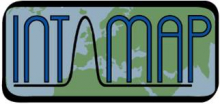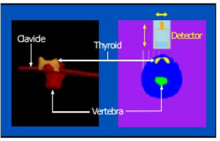Monitoring and analytical procedures
DAONEM, ECCO-MAGS, INTAMAP, MODEM, OMINEX
| INTAMAP - Interoperability and Automated Maping (2006-2009) | |
|---|---|
 | The main objective of this project was to develop an interoperable framework for real time automatic mapping of critical environmental variables by extending spatial statistical methods and employing open, web-based, data exchange and visualisation tools. To illustrate the potential at the European scale the framework was applied to produce a system for automatic mapping of radiation levels reported by 29 European countries that participated in the European radiological data exchange platform (EURDEP). |
| ECCO-MAGS - European Calibration and Coordination of Mobile and Airborne Gamma Spectrometry (1998-2002) | |
|---|---|
 | The objectives of the 5th Framework ECCO-MAGS project were: to establish a thematic network based on co-operative links developed under a previous Concerted Action; to conduct an international calibration exercise for airborne gamma spectrometry (AGS) with the aim of validating standard procedures for measurement of deposited environmental radioactivity and dose rate; and to coordinate further European research leading to improved capabilities in AGS across the project's European partnership. |
| OMINEX - Optimisation of Monitoring for Internal Exposure (1998-2002) | |
|---|---|
 | The aim of the OMINEX project was to provide advice on the design and implementation of internal dose monitoring programmes in the workplace that enables best use to be made of available resources, while minimising costs. Topics addressed included choice of monitoring method(s), (for example, excretion monitoring versus in vivo monitoring), choice of measurement technique (for example, alpha spectrometry versus mass spectrometry), monitoring intervals, measurement frequency, required measurement sensitivity and accuracy, measurement parameters needed to achieve this performance, the resulting uncertainty in assessed intakes and doses, and minimum detectable doses.
|
| DAONEM - Data Assimilation For Off-Site Nuclear Emergency Management (2000-2004) | |
|---|---|
 | This project was set up to develop a coherent and harmonised data assimilation capability for off-site nuclear emergency management, introducing a practical improvement in the Real time On-line DecisiOn Support (RODOS) system. The work programme consisted of three main components, which are associated with the main pathways through which radioactivity will reach the biosphere. These include:
|
| MODEM - Monitoring data and information exchange among decision support systems (2001-2004) | |
|---|---|
 | This project aimed to achieve practical improvements in cross-boundary nuclear emergency management through the identification of the data and information necessary for decision-making and the development and operational test of appropriate communication procedures and techniques, thus ensuring the timely and adequate data and information flow between experts and their decision support systems in Europe. |
